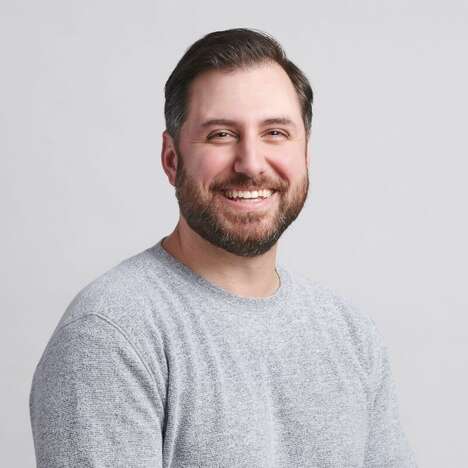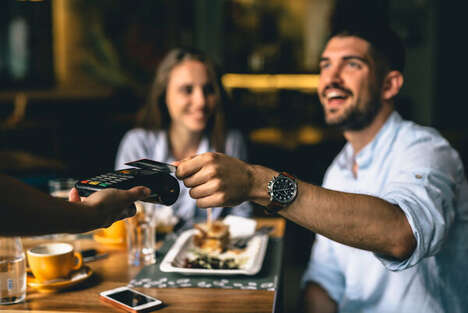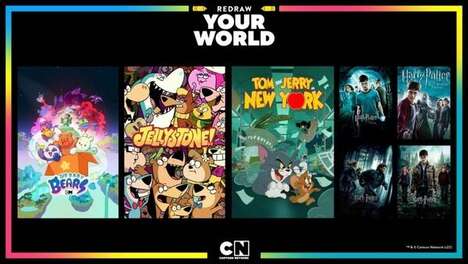Music as a Centerpiece
An Interview w/ Jeff Derderian, VP, Product Program Leadership, Sonos
Related Trend Reports
AI, Computers, Drinking, Food, Gadgets, Internet, Media, Multimedia, Political, Pop Culture, Tech



1. Can you tell us your name and your role at Sonos?
My name is Jeff Derderian and I'm the Vice President of Product Programs. My team is on the engineering and program management side of product development. So whenever we set up a new product program, like the Era 100 and Era 300, we build what we call a program leadership team.
We start with a product manager and they're responsible for the vision or the product roadmap. The first thing we do is pair them with what we call a Product Creation Leader–that's how I actually started at Sonos and was the Product Creation Leader for Beam. A Product Creation Leader is responsible for the product development team, so pairing up with product management and making that vision a reality. All of the engineering functions, design, user experience, research, audio is in that team. Another role we have at the company is a Product Realization Leader. They're responsible for taking that architecture, that design, and ensuring we can mass produce a product, so anything to do with manufacturing, supply chain, and logistics. While that might not sound as fun, it’s important and must be done. It’s great to have a design you can make once, but to make it a million times is the real challenge.
The other part of that program leadership team is program management. When we think of the program, a product is an important piece of it, but you also have events like this. So the go to market engine, the sales engine, and the website brand are all part of what the program manager oversees.
2. Can you tell us about today's event and any notable product launches that you want to touch on?
Obviously, we're here to talk about the Era 100 and 300 and these are products that we've been working on for a few years. When we develop a product, we take our time because we want to get it right. We care about attention to detail, quality and collaboration with creators and we go through this process because we know that when we launch a product, we want it to be right for the customers and right for the moment in time. We also want it to be the right price point, presenting the right value, because we always want to deliver value, which is the equation of the perception of what you're receiving over what you paid for.
So the Era 100 and 300 started being developed during an interesting moment in time three years ago. The Era 300 relies on spatial audio so we had to think about the future of spatial audio while also thinking back to five, six years ago. We had to consider if that was going to be a real thing, because for spatial audio to become real, it's this cascade of events that have to happen. You start back in time with formats and tech, like Dolby Atmos, a way to create the mix in the studio. Then you have to give the creators the ability to get on board and understand enough about it to want to mix in those formats. Then you need the streaming service to be able to provide it for the home, and you need the technology. You then need to be able to render it in the home, so when we are thinking about product development and product design, it's about trying to plot out enough in the future so that we don't launch a product and there's no content to play. It’s about thinking ahead so we don't miss the window, and that we're launching well after the content's available. It’s about finding that moment, and this present moment is actually great because it's early enough where we haven't missed it. It's still not at a point where it's mainstream and adopted by the masses.
Right now, when you ask people about spatial audio, you get a bunch of different answers and part of this launch is about educating people. The Era 100 and 300 are really exciting, and this is also one of the first times we've developed two products at the same time as a family.
I like the advertising of music as a centerpiece, and that aligns with this return of vinyl. I think as a consumer, people will appreciate it. We talk about that internally as lean in or lean back. A lot of people lean back and it's easy to have music everywhere in the house, but do you sit down, lean in, and listen to an album anymore? I think a lot of the vinyl resurgence is a result of people craving a little more of that focus and really wanting to just immerse themselves in the music. And collectors items are more in demand than before since consumers are seeking something physical.
My 17 year old daughter is all about the vinyl, and with the Era 300, though lean in listening is a thing, we also recognize that people don't necessarily want to sit in a sweet spot while they do it. When you think about that lean and listening classically, you think of a pair of bookshelf speakers and a chair that's optimized for this setup, and people don't live like that anymore. You've got open floor plans, and we’re taking that into account from a design perspective, We are designing our products to offer high quality sounds and are making them easy to tune on automatically, ensuring they’ll sounds good.
For so many years, our industry was about optimizing for sound and now you’re able to place a device everywhere and can still optimize that sound. If you look at the design aesthetic though, it’s trying to blend in. Our goal is that it's not screaming the Sonos brand but instead blending into the environment even from a distance. You don't even know what that is and it almost reads solid from a distance. It’s only as you approach the product that you start to see what it is, and another thing I love about the design approach is that it actually tells you this subconscious story about what's happening with the sound.
We wrap our speakers all the way because we're trying to tell a story of this wide soundstage, so it's subtle. There are subtle cues that we're trying to embed into the subconscious and these little delightful design elements. These subtle details are why it takes time to really nail the details because you’re trying to build this aesthetically beautiful thing while also jamming in a computer, multiple radios, all the acoustics, managing thermals, and a power supply so you don't have a brick but just the power cord. So all of that is talking about innovation that fits into one’s home and doesn't feel like technology.
3. What does innovation mean to you?
For us, innovation is about balancing tensions all the time. When we think about product development tensions that can exist early on, we look at those from a sound perspective. An example of this would be a large square box with drivers and no grill. It might have some big antennas hanging off the back, right? So thinking about the energy and effort required to take that, which engineering-wise would be optimal, and fit it in something that design-wise, you actually want to put in your home is a challenge and rewarding. It’s really about delivering home tech that blends in while still delivering on the same performance.
These tensions allow us to make unique and interesting products because we push through that when you could compromise and decide that it’s too hard. We just make it bigger and our design team pushes and says what if we did it this way, what if we did it that way? There is synergy and sometimes not synergy but without that, we wouldn’t have the tension.
What makes the team great is that everyone is willing to compromise because it's for the greater good of the product. One one hand, you're fighting for what you think is the best, but at the end of the day, you all compromise and you land on something that's still amazing.
Our VP of Design and Hardware Dana Krieger and his team are in Santa Barbara which is beautiful. That team will host these sessions whenever there’s new ideation happening. Whoever's the lead designer will come with all the ideas and they'll have these sketching and post-it notes sessions. I’ve had the privilege to sit in on some of those, observing and taking in that energy which is really inspiring. It's about bringing that design thinking into an engineering problem and asking a question naively. One of the things we’ve done as we learn and evolve is also evolving our software stack, the software platform. When we learn new techniques for signal processing, we'll roll that back in, so when we developed Playbase, that was our first home theater product after Play Bar, our first soundbar. We learned a lot about taking home theater to the next level, and when we were doing our creator sessions, we realized that Play Bar could sound a lot better with new single processing and we made it happen. We went and re-tuned Play Bar’s free software and updated it.
The result was pretty cool and the innovation there is that this device is not just a speaker, it's a computer. It’s software that's evolving and improving. We also launched our voice assistant as a free software update. We launched Sonos Radio, which has a free tier available to everybody so you can get to your music faster. It’s important to consider the software, and without the software, our products would not do what we want them to, and that is critical to innovation.
4. How does your team generate new ideas? Do you have any specific rituals for resetting creativity?
We’re always trying something different. It’s a company and culture that is very adept to change, and if there's a better way to do something, we'll try it. We've done road mapping sessions where we get everyone in a room, hunker down for a week, learn and ingest all the information, followed by a whiteboard-style brainstorming session.
I mentioned the design methodology, which is very creative, and that’s a safe space for anyone to share ideas freely. We also do a lot of research. When we were developing the Sonos Move for instance, we made prototypes of the speaker and attached a battery pack and wrapper to it. We then shipped it to people's homes across London, LA and Chicago. We left the speakers in these homes for a week and later conducted home visits, meeting with our test subjects to understand what worked and what didn't work. Talking to customers is one of the best ways to understand what they want and what they need, which is not always the same thing.
When you think about Sonos Move, we were on an early mission to fill every home with music. That mission was to address all the rooms in the house, the last room being the outdoors. The Backyard Move was actually the product that addressed this and through our research, we found that people didn't want a fixed and plugged in speaker because they moved around their yard. It was only through talking to our customers and understanding what they needed that this product came into existence.
5. What's the biggest challenge you face when innovating?
Timing and I'll say having too many ideas. There's no shortage of things we could do and there are ideas that are pages long. Knowing the right time to start something and choosing the right moment, at the right inflection point in a market, as a trend is taking off so you don't miss it is crucial. We don't want to be too early either and we want to be very intentional. We don't release product skews all over the place and we want to have a very clean, focused story, so it's easy for our customers to understand it. With the Era 300, it's different. It's this unaddressed product in a category that exists, but it’s also a little bit adjacent. This is because we believe in that shift. We believe that spatial audio is real and that it provides value, that it's coming, and that it's going to become commonplace.
6. You talked a little bit about technology and being able to update current products. What about old Sonos products?
When looking at our oldest products from a few years ago, because they're computers inside, we realized we've gotta do a separation. The speakers that are over 15 years old are due for an update and this is one of the hardest things to determine because there's an expectation around a speaker lasting 50 years. At the same time, these are computers. They’re on a shared software platform that relies on resources, and it's one of the reasons why we doubled the RAM and we quadrupled the Flash with our new devices. We're building for the future and we're building for longevity so that we have plenty of headroom and complex computing included.
7. What role do trends play at Sonos? Can you speak about the landscape of audio technology and how that has changed in recent years?
I think this goes back to what I said before about predicting the moment. Spatial is the trend, right? I'll say it's more of a shift, because trend might imply a momentary fading, and I would say we wouldn't do something if it was just a trend.
We have these few moments to invest in order to deliver the most value to our customers. That's what it's about. How do we give the best products to delight people, to make them happy, to bring joy to their lives? We want customers to listen to more music than ever before so I view this as looking at shifts rather than trends.
For example, we weren't the first Atmos-enabled soundbar. We took our time and worked with the community to learn and understand when the industry would reach a point that streaming was going to be delivering Atmos since we believe in streaming as another shift. If you go back a few years, there was no iPhone when Sonos came out. This was way back in the early 2000s. People also didn't know what streaming was and the extent of it lived on Limewire, Napster and Rhapsody.
We weren't the first, but we wanted to make sure that the timing was right, because it's an investment to make a product that can render Atmos and we wanted to make sure we weren't launching a product that would cost a certain amount of money while not delivering value.
Next was that spatial audio shift and we had to time that right. Like I said, that whole chain of events had to lead up to this moment, and fortunately, we're deeply connected to that community. Voice control was another major shift in recent years so we're looking for those shifts and we're also looking to balance that against value. That investment drives the price point for our customers and they’ll only appreciate that if they can actually make use of it.
8. Looking to the future, how will Sonos continue to be a leader in innovation?
Our best innovation asset is our people. We are a team of people that all care very deeply about sound, about music, about movie content and many of us are musicians. For us, that passion comes through and we genuinely care about our customers, about each other, and about making the best products possible.
9. How Would you describe the company Culture now?
It's amazing and our core values are based in transparency so everyone in the company knows what's going on which is unique. We generally care about each other and it's a family first approach. Ultimately, we're doing all of this to provide or make great lives for our family, and hat passion and quality comes through in everything we do so I'd say it’s the best company I've worked for hands down.
We’ve definitely had our share of challenges as well. It was hard to foster that company culture, especially during a time when we all were working from home. Fortunately, we started using Zoom a long time ago, since like 2015. We had already been familiar with it, and during the pandemic, we relied greatly on the social equity we built up to connect with one another.
Now that we’re in a new era with new people joining the team, we're trying to make sure they're building that same social equity. I've never been at a place that really cares this deeply about their team's bonding. While you can build bonds in a pure work environment over time, sharing a meal with somebody, traveling, and events like this are times when you can really connect. And getting the engineers and designers together to share this type of experience is important and rewarding.
References: sonos
Featured Articles

Blockchain Nostalgia
Brands release retro NFTs to draw in specific demographics

Dine-In Tech
Technology to improve the dining experience through guest insights is on the rise

AI Dubbing
Companies are using AI to enhance audio translation and localization

Kid-Friendly Music
Platforms that engage children through music are emerging